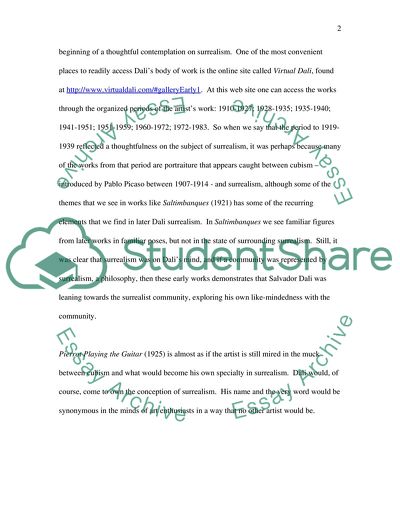Cite this document
(“The Surrealism of Salvador Dali Essay Example | Topics and Well Written Essays - 2500 words”, n.d.)
The Surrealism of Salvador Dali Essay Example | Topics and Well Written Essays - 2500 words. Retrieved from https://studentshare.org/visual-arts-film-studies/1545681-the-surrealism-of-salvador-dali
The Surrealism of Salvador Dali Essay Example | Topics and Well Written Essays - 2500 words. Retrieved from https://studentshare.org/visual-arts-film-studies/1545681-the-surrealism-of-salvador-dali
(The Surrealism of Salvador Dali Essay Example | Topics and Well Written Essays - 2500 Words)
The Surrealism of Salvador Dali Essay Example | Topics and Well Written Essays - 2500 Words. https://studentshare.org/visual-arts-film-studies/1545681-the-surrealism-of-salvador-dali.
The Surrealism of Salvador Dali Essay Example | Topics and Well Written Essays - 2500 Words. https://studentshare.org/visual-arts-film-studies/1545681-the-surrealism-of-salvador-dali.
“The Surrealism of Salvador Dali Essay Example | Topics and Well Written Essays - 2500 Words”, n.d. https://studentshare.org/visual-arts-film-studies/1545681-the-surrealism-of-salvador-dali.


